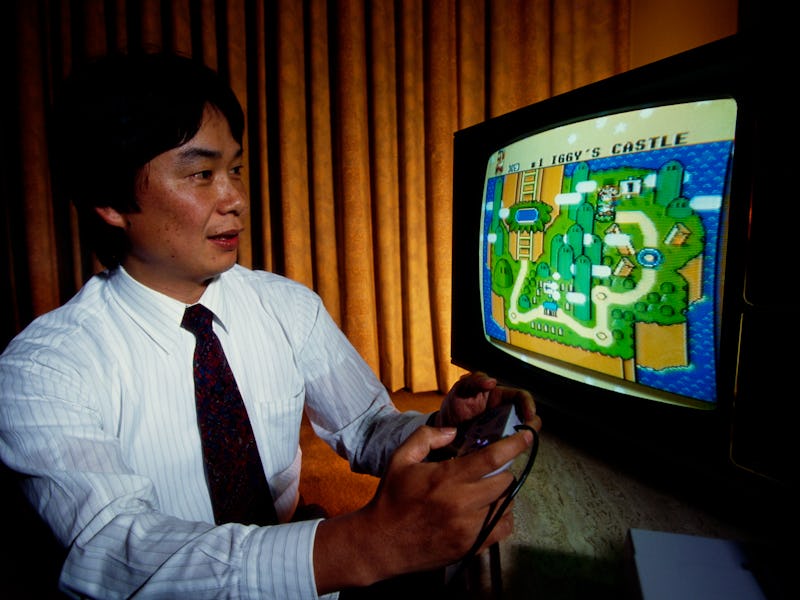35 Years Ago, One Incredible Console Proved It’s Not The Hardware That Matters
The birth of a legend.

These days, it’s common to see the Super Nintendo Entertainment System referred to as one of the best consoles ever made — and often as the greatest of all time. But at the time of its release, there was no way of knowing that would be the case. Despite its eventual dominance, the SNES faced stiff competition from rival consoles, making its eventual success even more extraordinary in hindsight.
Before adopting the SNES moniker, Nintendo’s new console was known as the Super Famicom in Japan, where it launched on November 21, 1990. By that time, the Sega Mega Drive had already launched in Japan, featuring technical capabilities far beyond that of the NES. Perhaps more important than the Mega Drive was the PC Engine, a console that faltered when it came to North America as the TurboGrafx-16, but was a huge success in Japan. Like the Mega Drive, the PC Engine launched between Nintendo’s two consoles, giving it a headstart of several years to establish itself as Japan's best-selling console.
A console is nothing without its games, and the Super Nintendo boasts an incredible library of classics.
Yet despite its competition, the Super Famicom was an immediate success. While the PC Engine put up a fight, the Super Famicom sold out at launch, becoming the best-selling console of its generation in Japan. That’s in spite of it only launching with two games: Super Mario World and F-Zero.
When the Super Nintendo came to North America the next year, the picture was quite different. By the time it launched outside of Japan, the SNES had more games to choose from and included Super Mario World as a bundle, but it also faced much stiffer competition from the Sega Genesis, as the Mega Drive was renamed for North America. While the Super Famicom quickly overtook its rivals in Japan, the Super Nintendo would have a much tougher climb, with the Genesis continuing to put up a fight throughout the console generation.
By the time of the Super Nintendo’s launch, the Genesis was cheaper, had a much larger library of games, and was bolstered by an aggressive marketing campaign from Sega. Nintendo fought back in part by emphasizing the SNES’ technical capabilities, most notably its Mode 7 graphics feature, which simulated a 3D effect in a way no other console was capable of and is especially important in racing games like launch title F-Zero.
The Sega Mega Drive didn’t put up much of a fight in Japan, but the Genesis was a formidable rival for the SNES in North America.
But the real battles of the console war were fought not by hardware, but by software. Sega and Nintendo were keen to advertise their consoles’ unique advantages, but a console only succeeds or fails by its games, and that’s where the SNES eventually found its advantage. Coming into the SNES generation, Nintendo had the backing of third-party developers like Capcom and Konami, but as Sega and Nintendo fought for dominance, many began developing for the Genesis as well. And in the end, it’s the Super Nintendo’s game library that cements it as one of the greatest consoles ever made.
When it comes to SNES games’ popularity, there’s no beating Super Mario World. The next generation of Mario games was a massive leap forward from its predecessors, and being packaged with the Super Nintendo ensured that it became the console’s flagship title. As predictable as Super Mario World’s success was, the SNES also featured more surprising Mario spinoffs as some of its top titles. The console saw the birth of the Mario Kart series with Super Mario Kart and the one-of-a-kind Mario Paint was an unexpected creative playground featuring Nintendo’s mascot. Even the sequel to Super Mario World, Yoshi’s Island, is like nothing else in the Mario series. The SNES also gave players the first Star Fox game, as well as some of the most beloved entries in The Legend of Zelda, Final Fantasy, and Metroid.
Looking back at the SNES, it’s not the hardware or even the console wars that stand out, but the games. While any console is bound to contain at least a few gems to be remembered for decades to come, the sheer number of classic games and series that got their start on Super Nintendo is astonishing. No matter how the SNES compared to hardware of the time, or how much technology has advanced since its launch, the Super Nintendo remains one of the most important consoles in history not for the chips that powered it, but for the experiences it made possible for its players.